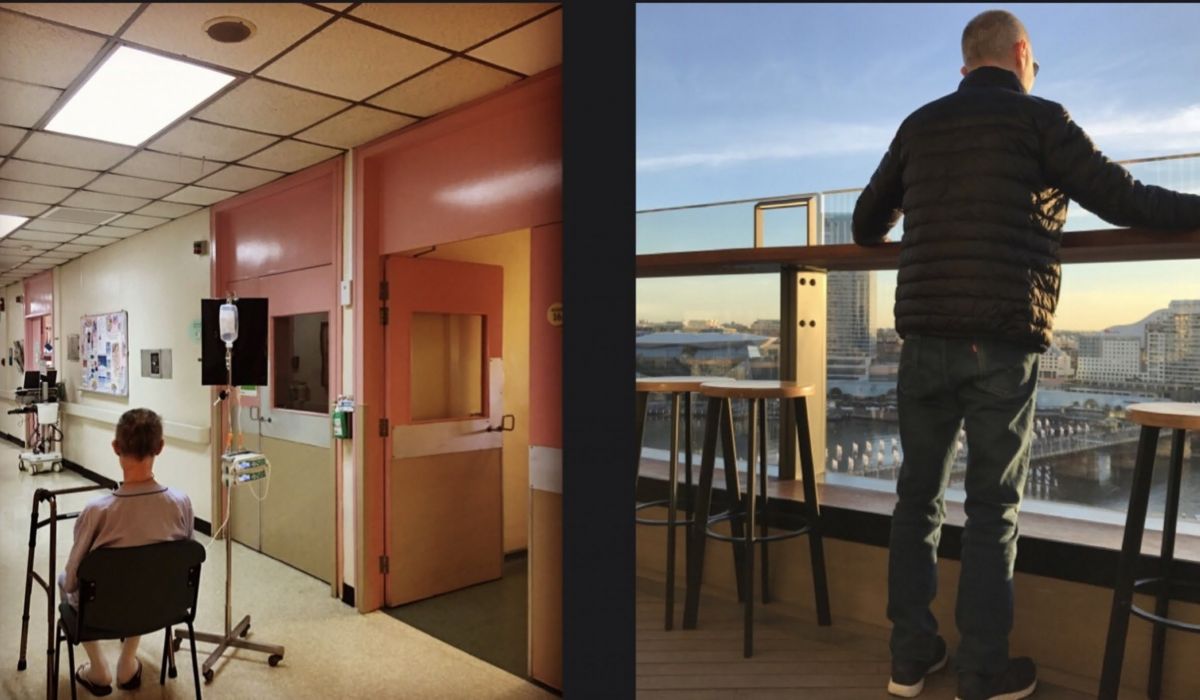
Putting on your pants
One of the benefits of being sick and nearly kicking the bucket is that it gives you a new perspective on life. It sorts the wheat from the chaff, and you gain a new sense of what it takes to succeed. Having an ileostomy is not much fun. An ileostomy is a procedure where the small intestine is diverted through an opening in the abdomen, called a stoma. A bag is placed over the stoma to collect the waste products that usually pass through the large intestine and out of the body through the anus.In most cases, the operation is fairly straightforward, but in my case, the wheels fell off. Life’s lessons are forged in the fires of trouble and strife.The road to recovery is painful; being bed-bound for five months is no picnic. Without proper food, nourishment, and exercise, the body forgets how to operate. Simple tasks like putting on your pants feel like an impossible dream. More than once I thought to myself, “Really? I used to be able to balance on one leg?”
However, I wanted my life back. I wanted to be able to walk, run, and do all the other things I could do before my surgery.
As I lay in recovery for months, I graduated from nasogastric (NG) intubation, where a tube is placed through your nose into your stomach, to being fed one teaspoon at a time. The food was puréed a zillion times, as my throat was no longer able to swallow. Not being able to eat, stand, or walk, the easiest thing for me was to lie in bed. I was comfortable and in no pain. I had had enough of pain. Eventually, I graduated from five teaspoons to 10, 15, and 20 – my loving wife fed me each time, since I no longer had the strength in my arms to lift the heavy spoon. Day by day, I made progress.
The easiest things are often not the best, both in recovery and in life. Growth does begin just out of our comfort zones. If we want to grow our businesses, then we need to adapt and change – what got you to where you are will not be enough to sustain the same level of growth. What got you here will not get you there!
In addition to the eating, I had to learn to walk again. I could not get out of bed unassisted; I needed four nurses or the patient cradle, which looks not dissimilar to a cow sling (Google it, and you’ll see what I mean). It reminded me of something we used when I was growing up on our property in Australia.
The first time I tried to walk, I used a walking frame with one nurse in front and another behind me. One step, two steps, I shuffled to the door in agony. I was done and, with tears rolling down my cheeks, I returned to bed.
Small steps that are seemingly inconsequential can have long-term effects. Many aspects of business are creative, such as being able to connect the dots and put the pieces of the puzzle together.
Each day, I made a little progress, and my nurses and my wife cheered me on when I finally made it around the ward. Success comes in small, painful steps. “That’s it, you can do it,” the physio would say as she charted my progress.
Everything was logged and charted; I had charts coming out of my eyeballs! Charts from the physiotherapist, occupational therapist, speech therapist, blood pressure, heart rate and blood sugar levels, and a host of other medical tests.
How do we know if we are making progress? What gets measured gets managed. All we can do in life, and in business, is a little better than last time.
For our businesses to grow, change, and adapt, we must take stock of where we are. What is the baseline? What is the benchmark of exceptional performance in our industry? Once we have a starting point and a goal, we need to be willing to make the necessary changes, which are often painful and difficult. Then, we need to chart the course and keep score, always willing to recalibrate and adjust.
Recovery takes time, and it is easy to underestimate how difficult it is. When we are in the middle of the storm, it feels like change is taking an eternity, but success is just around the corner if we do the simple daily tasks that are the steps to success. Learning how to put on your pants on is a team effort, and it often takes time, pain, and a chart!
You may also enjoy
The 12 Steps to Marketing Success
How to Hire A Medical Doctor Who Is A Business Person First
“Too expensive and Too Slow” – Drugs Still Lagging Behind?
Morunda www.morunda.com should be your choice of recruiting partner in Japan and Asia Pacific. Why? Because we live and breathe the pharmaceutical industry in Asia and the Pacific—we’re specialists!
- Morunda has completed over 400 managers to director-level placements since 2001.
- A cultural understanding of what it takes to secure top talent
- Over one hundred thought leadership articles published.
- We hold regular seminars for candidates and clients alike with industry experts.
- We understand the market, not only today, but where it is heading in the next 12 to 18 months
Recent Posts
- Top sporting coaches and business leaders have a lot in common
- Elevating Leadership: Insights from Japan’s healthcare sector
- How to be a country manager
- Here are four things your firm can do to attract and retain top talent in Japan’s pharmaceutical and medical device industry:
- Build a Strong Employer Brand – What can you do if your company stinks?


